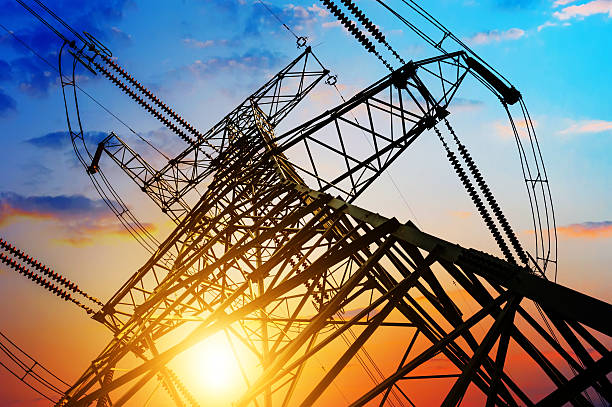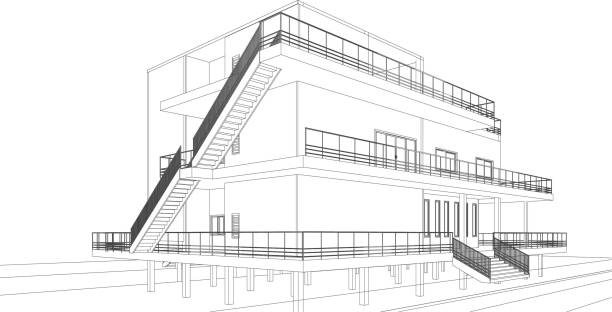The Impact of California’s New Utility Infrastructure Policies on Project Costing
Planning a project in California takes more than design and financing. One of the biggest cost drivers today comes from something easy to miss: utility infrastructure rules.
Table of Contents
ToggleThe state is reshaping how power, water, and gas systems connect to new projects. These changes aim to reduce wildfire risk, support electrification, and improve the grid. But they also bring new costs, longer timelines, and added risks for builders and investors.
At JDJ Consulting Group, we see these shifts on real projects every day. Our role is to help developers plan ahead, manage costs, and move through permitting without losing time or money.
Overview of California’s New Utility Infrastructure Policies
California has rolled out several utility policies that hit project budgets directly. Here are the key areas:
| Policy Area | What It Means for Developers |
|---|---|
| Wildfire Mitigation & Undergrounding | Many utilities now require underground service lines. This raises excavation and design costs. |
| Electrification & Gas Bans | Some cities ban new gas hookups. Developers must build all-electric systems. |
| EV Charging Requirements | Multi-family and commercial projects need space for EV charging stations. |
| Grid Reliability & Smart Tech | Utilities are updating rules for solar, batteries, and microgrids. |
| CPUC Cost Recovery Rules | More connection fees are pushed onto developers at the start of projects. |
These shifts mean utility planning can’t be left for later. It’s now a front-end issue that can reshape your entire budget.
Direct Cost Implications for Development Projects
So how do these policies show up in real numbers? Here are the most common impacts:
Connection Fees – Utilities now charge higher upfront costs.
Construction Changes – Undergrounding and redesigns increase labor and material needs.
Project Delays – Utility approvals take longer, which raises carrying costs.
Compliance Standards – New rules force larger electrical loads and EV capacity.
The table below compares what developers faced before these rules and what they face now:
| Cost Category | Before Policy Shifts | After Policy Shifts |
|---|---|---|
| Utility Hook-up Fees | Predictable and modest | Higher, often front-loaded into project budgets |
| Service Line Installation | Standard overhead or shallow underground | Deeper excavation and costly redesigns |
| Timeline Impacts | Utility approvals in weeks | Delays stretching into months |
| Electrical Infrastructure | Basic load requirements | Expanded loads for EV and all-electric systems |
For developers, these aren’t small add-ons. They are major budget drivers that shape the entire project plan.
Indirect Impacts on Project Costing
Not all cost changes show up on the first budget sheet. California’s new utility rules also create indirect impacts that can surprise developers. These effects often hit financing, timelines, and even market pricing.
Utility Cost Distribution: Before vs After Policies
Source: JDJ Consulting Group Analysis, 2025
Here are the main areas to watch:
1. Budget Uncertainty
Utility rules keep shifting, which makes project costs harder to predict. Developers may see new fees added halfway through design or construction. This uncertainty forces teams to hold bigger contingencies, which ties up capital.
2. Financing Challenges
Lenders pay close attention to cost risk. If a project faces unclear utility fees or possible delays, it can affect loan terms or interest rates. In some cases, financing may be harder to secure without a clear utility plan.
3. Market Impacts
When market costs rise, they often pass through to buyers or tenants. This can push sales prices higher or make rental units less competitive. In tight markets like Los Angeles, those shifts can determine if a project pencils out.
| Indirect Impact | How It Affects Developers |
|---|---|
| Budget Uncertainty | Larger contingencies needed, higher upfront reserves |
| Financing Challenges | Stricter lending terms, possible interest rate hikes |
| Market Impacts | Higher rents or prices needed to cover costs, shrinking demand |
For many developers, these indirect costs are just as important as the direct ones. That’s why JDJ Consulting Group focuses on early planning. By spotting these risks upfront, we help projects stay financeable and market-ready.

Case Scenarios for California Developers
Policies may sound abstract until you see how they play out on real projects. Below are three scenarios that show how utility rules affect costs in Los Angeles.
1st Case: Multifamily Project with EV Charging
A developer plans a 60-unit apartment building in Koreatown. City code requires EV charging for at least 20% of parking spaces. This means extra transformers, heavier electrical load, and more construction costs.
Added Cost: $250,000+ for new panels and wiring.
Time Impact: Two-month delay waiting on utility approval.
2nd Case: Commercial Redevelopment with Undergrounding
A retail site in the San Fernando Valley needs service upgrades. The utility requires the new power lines to be underground for wildfire safety. Excavation, trenching, and redesign of parking lots all raise costs.
Added Cost: $400,000 for trenching and redesign.
Time Impact: Four months added to the schedule.
3rd Case: Mixed-Use Project Facing Energization Fees
In Downtown LA, a mixed-use project requests new service. Under CPUC’s updated cost caps, the developer pays higher energization fees upfront. Financing had to be restructured to cover the sudden expense.
Added Cost: $150,000 in unexpected fees.
Time Impact: Extra month to secure new loan terms.
| Project Type | Policy Trigger | Added Cost | Delay |
|---|---|---|---|
| Multifamily (Koreatown) | EV charging rules | $250,000+ | 2 months |
| Commercial (San Fernando) | Undergrounding requirements | $400,000 | 4 months |
| Mixed-use (Downtown LA) | Higher energization fees (CPUC) | $150,000 | 1 month |
These examples show how fast costs add up. Each rule looks small on paper, but in practice, it shifts timelines and budgets in ways that can make or break a project.
At JDJ Consulting Group, we use scenarios like these to model risks early. That way, our clients enter projects with clear eyes and workable budgets.
How JDJ Consulting Group Helps Navigate These Challenges
California’s utility rules are complex, and they keep changing. For many developers, it feels like the ground is shifting under every project. That’s where JDJ Consulting Group steps in. We focus on helping clients manage both the direct costs and the hidden risks tied to these policies.
Here’s how we support projects from start to finish:
1. Regulatory Monitoring
We track updates from the California Public Utilities Commission (CPUC) and local agencies. This lets our clients know about new rules before they show up as surprise costs.
2. Permit & Utility Coordination
Utility approvals can stall a project for months. Our team works directly with utilities and city offices to move the process forward and avoid costly bottlenecks.
3. Cost Analysis & Budgeting
We build utility costs into project pro formas early. By modeling different scenarios, developers can see how policies will affect total budgets.
4. Stakeholder Engagement
Utility projects often involve multiple players—agencies, neighborhood groups, and service providers. We coordinate these conversations so clients don’t face unexpected pushback or delays.
💰 Utility Cost Estimator
Total Estimated Cost: $0
Strategic Recommendations for Developers & Investors
Utility policies in California aren’t optional. They shape project budgets, schedules, and even market viability. The good news is that smart planning can soften the impact. Here are five strategies we recommend to clients:
1. Start Utility Coordination Early
Don’t wait until construction documents are finished. Engage utilities during the entitlement phase. Early contact helps uncover connection fees and undergrounding needs before they blow up the budget.
2. Build Contingency Into Budgets
Utility fees and timelines often shift mid-project. Add a realistic buffer to your pro forma. A 10–15% contingency on utility-related costs can prevent last-minute financing gaps.
3. Explore Alternative Energy Options
On-site solar, battery storage, or microgrid solutions may reduce dependence on utility upgrades. These systems also help meet California’s electrification goals while offering long-term savings.
4. Align with Lenders Early
Lenders want clarity on utility risks. By showing them a plan for approvals, fees, and possible delays, you increase confidence and improve your financing terms.
5. Use Expert Guidance
Policies change fast. Working with a consulting team that tracks regulations, coordinates permits, and models costs saves both time and money.
| Recommendation | Why It Matters |
|---|---|
| Early Utility Coordination | Reduces surprises and improves schedule certainty |
| Budget Contingencies | Keeps projects financeable when fees increase |
| Alternative Energy Solutions | Cuts long-term costs and improves resilience |
| Lender Alignment | Builds stronger financing terms and smoother closings |
| Expert Consulting Support | Ensures compliance and proactive project management |
These steps don’t just reduce costs. They also make projects more attractive to investors, lenders, and end users. In competitive markets like Los Angeles, that edge can determine whether a deal moves forward or stalls out.
5. Strategic Advisory
Every project is different. We help clients weigh options like phased construction or design adjustments that reduce utility costs.
| JDJ Service | Developer Benefit |
|---|---|
| Regulatory Monitoring | No surprises from sudden rule changes |
| Permit & Utility Coordination | Faster approvals and fewer project delays |
| Cost Analysis & Budgeting | Realistic pro formas with built-in contingency planning |
| Stakeholder Engagement | Smoother communication with agencies and communities |
| Strategic Advisory | Smarter designs and cost-saving project strategies |
For developers in Los Angeles, these services mean one thing: less risk and more control over budgets and timelines. Instead of reacting to policy changes, JDJ clients can plan ahead and keep their projects moving.
Conclusion
California’s push for safer, cleaner, and more reliable utilities is reshaping the development landscape. These policies may start as regulations on paper, but they translate into real costs, new requirements, and longer timelines for developers and investors.
The impact isn’t limited to direct utility fees. It affects financing, design, and even the marketability of projects. For many teams, these shifts can feel overwhelming.
The projects that succeed in this environment are the ones that plan ahead. They engage utilities early, build realistic budgets, and adapt designs to new standards. Most importantly, they rely on experienced advisors who understand both the policy framework and the day-to-day realities of development in Los Angeles.
At JDJ Consulting Group, that’s exactly what we deliver. Our team helps clients translate policy into action, manage costs before they spiral, and keep projects moving through approvals.
If you’re planning a project in California, the question isn’t whether utility policies will affect your costs — it’s how you’ll respond. With the right strategy, these challenges don’t have to stop progress.
JDJ Consulting Group is here to help you turn regulation into opportunity. Reach out to us to schedule your free consultation today at: https://calendly.com/james-jdj-consulting/30min
Direct vs Indirect Utility Costs 📊
Direct Costs
Indirect Costs
Source: JDJ Consulting Group, Los Angeles Case Studies 2025
Project Timeline Delays ⏱️
Source: JDJ Consulting Group Project Analysis, 2025
FAQs: Impact of California’s New Utility Infrastructure Policies
1. Why do utility policies matter for development projects in California?
Utility rules set how projects hook to water, gas, and power. Those rules change connection costs, design needs, and approval times. A rule can turn a small line item into a major line in your pro forma.
2. What are the biggest new utility policies in California?
The most impactful trends are wildfire mitigation (like undergrounding), electrification rules, EV charging mandates, grid modernization for solar and storage, and shifting cost-recovery practices. Each targets safety or decarbonization but raises project complexity.
3. How do wildfire safety rules affect project costs?
Wildfire rules often require moving overhead lines underground or upgrading equipment. That means more trenching, new civil designs, and longer permitting. The work can add tens to hundreds of thousands of dollars, depending on site conditions.
4. Are gas hookups still allowed in new California projects?
It depends on local rules. Some cities restrict or ban new natural-gas service for new buildings. Other places allow it with conditions. The safe approach is to plan for an all-electric fallback. What to do: check local municipal codes before final design. Consider “electric-ready” designs if you can’t go fully electric yet. How JDJ helps: we verify local code, recommend systems that meet rules, and model tradeoffs for electrification.
5. What do EV charging requirements mean for developers?
EV mandates increase electrical load and require parking infrastructure changes. You may need larger service panels, conduit runs, and space planning for chargers. These add construction cost and design complexity. What to do: size electrical service for future growth, not just today’s need. Stage charger installs to match cash flow. How JDJ helps: we size loads, draft EV infrastructure plans, and coordinate phased implementation with utilities.
6. How does CPUC cost recovery impact budgets?
When utilities recover more costs from customers, developers can face higher upfront energization and connection fees. That front-loads expenses that used to be spread over time. This raises financing needs and affects cash flow. What to do: confirm expected connection fees early and include them in your financing package. How JDJ helps: we obtain fee estimates, negotiate timing where possible, and include those costs in pro formas.
7. Can utility approvals delay a project in Los Angeles?
Yes. Utility reviews often involve multiple groups and can extend timelines by weeks or months. Delays increase carrying costs and can push milestone dates.
8. How do utility rules affect project financing?
Lenders want clear risk profiles. Uncertain utility fees or long approval windows raise perceived risk. That can mean higher rates, stricter covenants, or requests for larger reserves. What to do: present lenders with a complete utility plan and conservative cost contingencies. How JDJ helps: we produce lender-grade utility risk memos and pro forma scenarios to reduce lender pushback.
9. What indirect costs come from new utility policies?
Indirect costs include larger contingency reserves, delayed revenue from late starts, higher insurance or financing costs, and possible redesigns that change unit mixes or rents. These ripple effects often exceed the direct fees. What to do: model indirect impacts, not just permit fees. Add contingencies that reflect schedule risk. How JDJ helps: we run sensitivity analyses that show how utility changes affect ROI and break-even points.
10. Do alternative energy systems help reduce utility costs?
Yes. Solar, batteries, and microgrids can reduce the need for large utility upgrades. They can also provide resiliency and meet some code goals. But they have their own capital and maintenance costs.
11. How should developers plan for these utility-driven costs?
Start utility coordination in entitlement, budget realistic contingencies, and get preliminary utility quotes early. Treat utility scope as a hard input to your pro forma. What to do: add a 10–15% utility contingency and secure conditional utility estimates before closing financing. How JDJ helps: we create utility cost worksheets, secure early estimates, and refine your budget as rules change.
12. What mistakes do developers make with utility planning?
Common errors are late utility engagement, underestimating fees, ignoring indirect schedule impacts, and failing to plan for EV and electrification needs. These mistakes create surprises and cost overruns. What to do: don’t guess—get data. Use early utility letters and factor them into design decisions. How JDJ helps: we prevent these errors by running a utility readiness checklist at the start of every project.
13. Can JDJ Consulting Group speed up utility approvals?
Yes. Speed comes from experience, relationships, and proactive submittals. We provide complete packages that reduce questions and rework. We also push follow-ups so approvals don’t stall. What to do: hand utility coordination to a team that knows the reviewers and the typical pitfalls. How JDJ helps: we manage submissions, track review cycles, and escalate when needed.
14. What role does stakeholder engagement play in utility planning?
Stakeholder engagement reduces surprises. Agencies, neighbors, and utilities can raise issues that cause redesigns. Early outreach helps resolve objections before they cause delays. What to do: meet key stakeholders early, share clear plans, and document agreements. How JDJ helps: we run stakeholder meetings, summarize action items, and keep communication tight between parties.
15. How does JDJ Consulting Group support cost management?
We combine policy tracking, utility coordination, and financial modeling. That gives you a clear view of the likely costs and timelines. You get actionable steps that protect your budget and close deals. What to do: treat consulting as insurance—spend up front to avoid larger surprises later.






